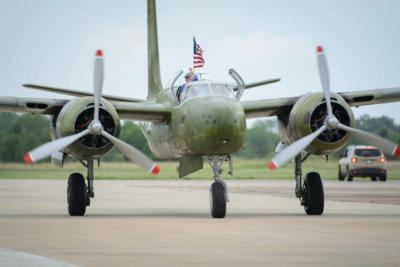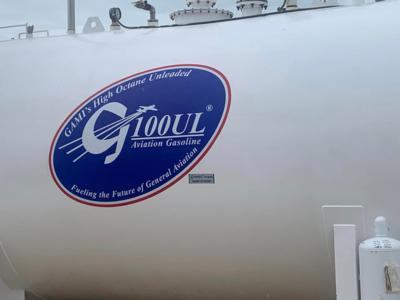Right Engine Used Newly Developed Unleaded Avfuel, While The Left Engine Continued To Use Traditional Leaded AvGas
For Commemorative Air Force (CAF) member Patrick Mahaffey any day where he gets to fly a vintage World War II aircraft is special. Recently, Mahaffey got the chance to make his flight not just special—but historic. He had the unique opportunity to be the first pilot to fly a large radial engine airplane using the new unleaded aviation gasoline.

This landmark flight involved a 1944 A-26 Invader attack bomber, a powerful aircraft with a 2,000 HP radial engine. During his flight, the aircraft flew on two different types of gasoline. The right engine used the newly developed unleaded aviation fuel, while the left engine continued to use the traditional leaded gasoline that has been the industry standard for decades. Despite using the two different fuels, according to Mahaffey there was no noticeable difference in performance with the engines.
This flight is a significant milestone to the entire aviation community, specifically as it relates to the Federal Aviation Administration's (FAA) efforts to cut leaded aviation fuels. The FAA, alongside partners in the aviation community, launched the Eliminate Aviation Gasoline Lead Emissions (EAGLE) initiative following a Congressionally mandated report from the National Academies. The EAGLE team aims to safely phase out leaded aviation fuels in piston-engine aircraft by 2030.
To achieve this goal, the FAA set up two pathways to authorize new unleaded fuels: the FAA fleet authorization process and the traditional aircraft type certification/supplemental type certification (STC) process.

As part of the STC process, the FAA approved a model list STC in September 2022 for GAMI's 100 Octane unleaded fuel (G100UL) for general aviation aircraft. The FAA is also working with Swift Fuels on an STC for a high-octane unleaded fuel (100R) for a limited number of engines and aircraft, expected later this year. In March 2023, the FAA issued a Fleet Authorization Policy Statement to guide the authorization of unleaded fuels for the U.S. piston-engine general aviation fleet. The FAA plans to issue fleet authorizations for UL 94 / UL 91 unleaded fuels later this year, making approximately 68% of the general aviation fleet eligible to use these fuels.
Under the Piston Aviation Fuels Initiative (PAFI), the FAA is collaborating with Afton Chemical/Phillips 66 and LyondellBasell/VP Racing to test and evaluate high-octane unleaded fuel solutions. Fleet authorizations for these fuels are expected after successful testing. To support flight schools, the FAA and EAGLE have developed a guidance document to aid with the transition to unleaded fuels. Additionally, the Airport Cooperative Research Program is developing best practices for the safe transition to unleaded fuels for the country's fleet of 220,000 piston aircraft.
Patrick Mahaffey's historic flight not only marks a significant achievement in aviation fuel development but also brings us closer to a future where unleaded aviation gasoline is a reality for all pilots and airplanes. This flight, combined with ongoing efforts, highlights a pivotal moment in the journey towards a lead-free aviation future.
 Aero-TV: DeltaHawks Diesel Power Steps Into the Spotlight
Aero-TV: DeltaHawks Diesel Power Steps Into the Spotlight NTSB Prelim: Mooney Aircraft Corp. M20K
NTSB Prelim: Mooney Aircraft Corp. M20K ANN FAQ: Turn On Post Notifications
ANN FAQ: Turn On Post Notifications ANN's Daily Aero-Linx (12.20.25)
ANN's Daily Aero-Linx (12.20.25) Aero-News: Quote of the Day (12.20.25)
Aero-News: Quote of the Day (12.20.25)




